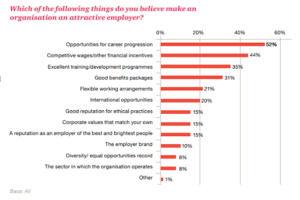In this day of consumerization of personalization, employees are not looking for a one size fits all approach any longer, but for learning and development opportunities that are specific to their needs. Augmented reality is a unique way to supplement your existing e-learning content and to engage your employees in the Learning and Development journey. Using Augmented Reality For Hands-On Training (forbes.com)
Augmented reality (AR) is an interactive experience of a real-world environment where the objects that reside in the real world are enhanced by computer-generated information. AR can be defined as a system that incorporates three basic features: a combination of real and virtual worlds, real-time interaction, and accurate 3D registration of virtual and real objects.
For organizations looking to implement the next level of training, Augmented Reality or AR-based training is quickly cementing itself as the technology of choice. How Augmented Reality Is Changing the Training Industry (trainingmag.com) Augmented Reality training in a corporate setting is the ideology of bringing training to life by animating daily objects and scenarios that an employee interacts and engages with.
Experts agree that for a behavior change to take place, learners must remain engaged throughout training. This is an ongoing challenge in L&D. Whether it be in a classroom or an eLearning course, with all of today’s distractions it is often difficult to grab and hold the attention of learners. E-mails are pinging, phones are ringing, text messages are coming in, all of which seem to demand immediate attention.
Another challenge can be providing learners with experiential learning opportunities, where they are actually able to interact or practice with whatever they are learning. When learning is engaging and experiential like this, the knowledge retention of learners increases dramatically. In addition, when learners are placed in an environment where they are “pulling” content through their own discovery versus being “pushed” content, that feeling of control can also result in much higher knowledge retention. Higher retention is critical to achieving behavior changes.
Printed learning materials can be brought to life by taking something static and creating animation and interactivity that engages the learner and demonstrates perspectives that simply can’t be shown with something static. Group activities can be transformed into interactive experiences that get the learners up and moving and working together as they scan various items to solve clues and obtain new knowledge along the way.
For example, a training app for a forklift may ask the user to sit down and aim their device camera downwards, and their screen will light up with virtual pedals next to their feet and driving controls above their knees. This allows the user to practice in a safe environment, without any of the real-world risks. Augmented Reality Training: Benefits, Types, Use Cases | Program-Ace Multiple people could be trained simultaneously without having to give up forklifts for production.
Augmented reality is a promising technology with a strong future in eLearning and especially for corporate training.


